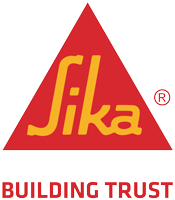How manufacturers are supporting Building Information Modeling (BIM) growth
 Initially used as a tool for design and construction, BIM has evolved into a workflow process used during the design, construction and operation phases of the building lifecycle. Some of the well-recognized benefits include:
Initially used as a tool for design and construction, BIM has evolved into a workflow process used during the design, construction and operation phases of the building lifecycle. Some of the well-recognized benefits include:
- Data sharing and communication: The process provides a means for easy and effective collaboration among stakeholders, plus ready access to building modeling information.
- Visualization: Digital models offer a pre-construction view of the project. This results in a better understanding of the various systems, components and elements which allows changes to be implemented prior to the start of construction.
- Clash detection: Potential incompatibility between systems, products and equipment are more easily visible which allows changes and solutions to be implemented and ahead of construction.
- Performance and building data: Throughout the operation phase, building owners have ready access to data necessary for building maintenance and system management.
- Waste and rework: Models estimate material quantities and offer a better understanding of the project scope which can lead to more efficient use of labor and materials.
BIM is most commonly used by design professionals, subcontractors, engineers, contractors, owners, facility managers, manufacturers and others. While the use and value of BIM can differ by the various parties involved in a project, the information within the BIM model needs to be readily available and shared among all parties to be most effective.
Data and content are a critical part of BIM and create the most value for users. While generic product models and data are sometimes used, manufacturer-developed content is particularly beneficial as it is based on actual product information. Manufacturer-developed content includes digital objects or 3D product representations along with other essential technical information that can be integrated into BIM. This type of high-quality content is more accurate and complete which can result in a better experience for BIM users.
Along with high quality content, manufacturer information needs to be trustworthy and reliable to be of great value. Below are key factors BIM users should consider:
- BIM libraries: While many options exist, content should reside on well-recognized platforms that are widely used, contain objects that are easy to access and download, and offer the most tools.
- Digital content: In addition to 3D representations, content should be regularly updated and include links to other key product information such as descriptions, videos, specifications, and performance data.
- Intuitive: Content should be organized with clearly identifiable objects, so users have quick, ready access to manufacturer information.
- Assembly and design tools: These tools are useful to configure, customize, and export complex objects such as wall or roof systems which are often comprised of multiple components and product options.
- Support: Tools, libraries, training and objects should be available on content pages along with company contacts that can provide supplemental information as necessary.
The use of BIM is transforming the construction industry, from product selection to increased efficiency and effective collaboration. As BIM evolves, so does the role of manufacturers. Many are recognizing the importance BIM plays in the entire lifecycle of a building and are developing reliable BIM content in support of the process that is quickly and easily accessible. In doing so, manufacturers are adding value and building strong relationships across the construction industry.
We've made it easier for architects and designers to incorporate Senergy Wall Systems into their BIM workflow, to learn more and download digital assets, visit the BIM tools page on our website.

